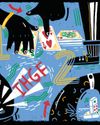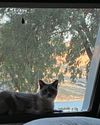
Others have their sights set closer to home: on future cities under the ocean.
"Technologically speaking, it is absolutely possible to colonize the bottom of the sea," says Fabien Cousteau. He's a well-known ocean explorer based in New York City. He once spent 31 days living in what is currently the world's only functioning undersea habitat, Aquarius. It's about the size of a school bus and located 62 feet (nearly 19 meters) below the ocean surface off the Florida Keys.
Just as astronauts test what it would be like to live in space, aquanauts (also called oceanauts) try out undersea living with an eye on the future. Escaping from disasters such as climate change, wars, or pandemics is one reason to live under the sea. Others include studying, exploring, or appreciating the ocean.
Denne historien er fra July/August 2023-utgaven av Muse Science Magazine for Kids.
Start din 7-dagers gratis prøveperiode på Magzter GOLD for å få tilgang til tusenvis av utvalgte premiumhistorier og 9000+ magasiner og aviser.
Allerede abonnent ? Logg på

Denne historien er fra July/August 2023-utgaven av Muse Science Magazine for Kids.
Start din 7-dagers gratis prøveperiode på Magzter GOLD for å få tilgang til tusenvis av utvalgte premiumhistorier og 9000+ magasiner og aviser.
Allerede abonnent? Logg på

HOUSE OF CARDS
TRY THE PERFECT EXPERIMENT—AND THEN REFLECT ON HOW IT WENT.

ACCIDENTALLY Delicious
Have you ever been really hungry, but there wasn't much to eat in your kitchen? Did you throw together a bunch of stuff you had on hand and were pleasantly surprised when it tasted good?

IS YOUR SOCIAL MEDIA FEED TOO PERFECT?
EVERYONE'S LIFE CAN APPEAR PERFECT ON SOCIAL MEDIA. On YouTube, Instagram, Snapchat, and similar apps, people tend to share their happiest, most picturesque moments. They carefully compose any text to get the message just right. They use filters and enhancements to glam up images and videos. The app sorts the posts with the most likes and comments to the top. The end result? All you see of others' lives is the best of the best.

Art ALERT!
THE CASE OF THE MASTERPIECE THAT WASN'T

MARYAM ZARINGHALAM
SCIENCE POLICY FELLOW AND WRITER

Lost Cat Treks More Than 800 Miles to Get Home
Rayne Beau (pronounced RANE-BO, as in \"rainbow\") is a two-year-old Siamese cat.

EASY AS ABC
But in number theory, well, it's complicated.

That Wanaka Tree Gets a Companion
\"THAT WANAKA TREE,\" AS IT'S CALLED, IS A FAMOUS WILLOW TREE THAT GROWS OUT OF LAKE WANAKA ON THE SOUTH ISLAND OF NEW ZEALAND.

Two College Students Devise Smart Glasses That Can ID People
YOU'RE WAITING FOR THE SUBWAY WITH A COUPLE OF YOUR FRIENDS.

Two Comb Jellies Can Fuse Their Bodies Together to Become One
COMB JELLIES ARE GELATIN-LIKE AND MOSTLY SEETHROUGH INVERTEBRATES, OR ANIMALS WITHOUT A BACKBONE, THAT FLOAT IN THE OCEAN NEAR SHORE.
